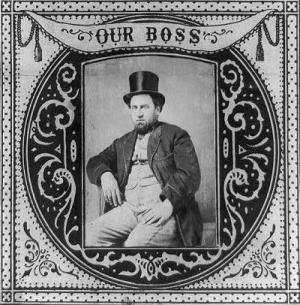In 1873 Boss Tweed and many of his associates were arrested for forgery and
larceny. Tweed spent two years in jail. Upon his release he was immediately rearrested for multiple civil charges. During his second incarceration Tweed was aloud to daily visits at his son in laws house, with the condition of being under constant
surveillance. On Dec. 4, 1875, William “Boss” Tweed was having a family lunching at his son in laws home, all wile under the surveillance of William C. Conner, during one of such visits, Tweed made his escape. Surprisingly there was no crazy distraction or elaborate plan, all he did was say he needed to step outside for some fresh air, where he had a horse drawn carriage waiting for him. While on the run Tweed hid under the name John Sector. After hiding in new york right under the polices nose and making it out of some close calls, Tweed made his way down to Florida. where he had arranged to meet his family. From there they fled to Spain, unfortunately when Tweed arrived in Spain the authority's recognized him from Nasts political cartoons. Tweed was subsequently sent back to prison, where he lived until his death in April 1878.











